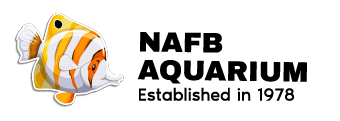Figure 8 Puffer (Dichotomyctere Ocellatus)
The Figure 8 Puffer, also known as the Eyespot Puffer, is a captivating brackish water fish native to Southeast Asia. This species is renowned for its distinctive markings that resemble the number "8," lending it its common name. Puffer fish, named for their ability to inflate their elastic stomachs with water or air, often puff up even without apparent threats in aquarium settings, making them larger and harder for predators to swallow. These charming creatures are among the few fish that can blink or close their eyes, and they possess a beak-like mouth formed by the fusion of two teeth from each jaw, ideal for crushing their favorite food - shelled invertebrates. They also possess a unique ability to move their eyes independently, allowing them to scrutinize their surroundings without needing to shift its body. These unique adaptations contribute to their captivating character and appeal.
The Figure 8 Puffer is a smaller puffer species, reaching a maximum size of about 3 inches. While Figure 8 Puffers can coexist with their own kind in a sufficiently spacious aquarium, research indicates that those kept in solitude typically enjoy a longer lifespan in captivity. If you're keen on housing multiple Figure 8 Puffers, it's advisable to start with a group of at least four. This strategy helps to distribute any potential aggression evenly among the group, reducing the likelihood of targeted bullying.
Figure 8 Puffers are semi-aggressive and can nip at the fins of other fish, making them best suited for a species-specific tank. If you wish to incorporate other fish, opt for brackish water species such as bumblebee gobies or mollies, but success is not guaranteed.
These puffers are carnivorous, with a preference for hard-shelled foods like snails and clams, which help grind down their continuously growing teeth. They also enjoy a variety of other foods, such as bloodworms, blackworms, brine shrimp, mysis shrimp, and krill.
Figure 8 Puffers are known for their intelligence, often recognizing their caretaker, and will exhibit signs of excitement during feeding times, adding to the joy of owning one. However, it's crucial to avoid overfeeding these seemingly perpetually hungry fish. Aim to provide enough food for a three-minute feeding session twice a day; anything beyond that could lead to overfeeding.
A well-decorated aquarium with ample swimming space is essential for the Figure 8 Puffer. They appreciate a complex layout of decor to explore, as well as ample swimming room. If your puffer is just pacing the glass, it's probably bored! To keep your puffer engaged and prevent boredom, consider regularly rearranging elements in the tank, such as terracotta pots and PVC pipes, to create new areas for them to explore.
A mature aquarium with a soft sand substrate, preferably fine coral sand, is recommended to maintain hard and alkaline water conditions. Use smooth rocks, large shells, driftwood tangles, and dense clusters of sturdy plants to create numerous hiding places. Robust vegetation, such as Anubias and Vallisneria, can tolerate harder water.
Figure 8 Puffers thrive in brackish water with a specific gravity of 1.005-1.008. They require a minimum tank size of 20 gallons, with an additional 10 gallons for each additional puffer. Their ideal water parameters are a pH of 7.0-8.0, hardness of 5-12 dGH, and a temperature of 74-82°F (23-28°C).
Figure 8 Puffers are not suitable for every aquarist due to their specific care requirements and semi-aggressive nature. However, for those who can provide the necessary care and environment, owning a Figure 8 Puffer can be a rewarding experience.
To learn more about this fish, be sure to check out the Additional Information tab.



Reviews
There are no reviews yet.